Interview with Willie Williams, Scenic Designer of U2 360
Scenic designer Willie Williams designs shared experiences. Equally at home with intimate performance pieces and stadium-sized spectacles, he’s designed shows for a gamut of artists from Kronos Quartet to U2 and Lady Gaga. His long association with U2 culminates with their current 360° tour, arguably the largest touring show in history. Willie spoke with us from the road of their Fall European leg, where nightly he oversees each show.
stated: Thanks so much for joining us. Would you mind describing your work and creative process?
WILLIE WILLIAMS: My creative output covers several different forms, but my day job is the designing of shows & performance environments, ranging from large scale rock shows to theatre to performing arts.
In our media-saturated online age, the experience of live performance has a special resonance and the energy-exchange between audience and performer can be uniquely powerful. I see my task as creating a situation in which this exchange can take place and when it succeeds, a show becomes a visceral and sensory experience for the viewer. There is an energy that comes from working with music in a live context that is unlike any other medium. Creating that experience and working with music which has punctuated the emotional high points of people’s lives is an extraordinary privilege.
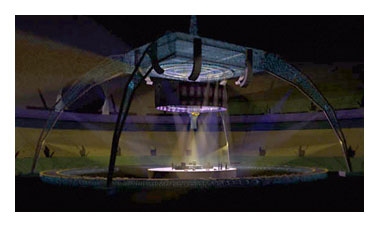 |
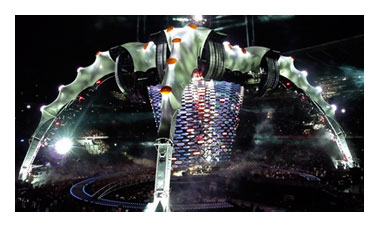 |
Inevitably, the creation of a live show is a highly collaborative process, so I balance this by working alone and on a vastly smaller scale by making gallery-based installations. These are composed of small machines that produce light-shows from irredeemably ugly glass objects. These are shown without a soundtrack, other than the mechanical noises of the objects themselves. The work is quite meditative and designed to be ingested at a slower, gentler pace than a music-based piece.
If there’s a thread that runs through everything I do, it is perhaps something to do with discovering beauty in unexpected places. In the gallery work, I am taking objects that are discarded, unfashionable & overlooked then by (quite literally) showing them in a different light, am pulling from them something emotional and genuinely moving. Similarly, many of my show designs have been of an extremely hi-tech nature, but alongside the technology I always like to include elements that are very physical, very lo-fi. Without this, technology can become very cold and inhuman. The element of trash, or fun, or redeemed kitsch is what makes the connection with the human spirit.
I’m also a pretty good cook.
stated: No doubt. How did you first get started and what drew you to it? Who are some of your influences?
WILLIE WILLIAMS: I fell into ‘doing lights’ through hanging out with friends who were in bands. It was 1977, punk rock was in full swing and I was busy running away from home. I was never going to be a musician, but loved being in the atmosphere of club gig life, so essentially started stalking some of my favourite bands of the time. I started playing with lights mostly because it seemed like a fun way to be involved and there was no-one else to do it. I had absolutely no career strategy but was steered by the sheer joy of being part of this great, passionate, powerful thing—the live show.
[ Subscribe to the Stated Magazine Newsletter and follow us on Facebook and Twitter! ]
Another turning point was stumbling upon the world of performing arts, a discovery that was every bit as startling and inspiring as punk rock had been. I often cite Laurie Anderson as being my biggest influence and her work with early multimedia set in motion the tidal wave of imagery that now overwhelms us. More recently it has been a great privilege to work with her and also with the Kronos Quartet. The clarity of vision and quality of ideas (not to mention the absurdly virtuosic ability) of these people is enormously inspiring and is an experience which feeds back into the rest of my work.
stated: What are you working on now?
I’m currently on tour with U2, with their 360° tour, where we are playing football stadiums in the round and carrying a structure not dissimilar to the bottom half of the Eiffel Tower. This configuration allows a colossal number of people to attend each show, creating a situation that fuses the energy of a rock show with that of attending a football match. All the audience members are facing the stage but, as with a sporting event, they’re also facing each other. This creates a very powerful sense of community within the stadium and the shows have been emotionally very intense. In wouldn’t seem possible to create intimacy on such a grand scale but this is what happens.
stated: I saw the U2 show at Giants Stadium last year and it was truly mind-blowing. I was genuinely affected by how intimate the show felt in such an enormous space. Can you tell us a bit about some of your “solo” projects?
WILLIE WILLIAMS: On another tangent entirely, I have also just published a graphic novel. It is the first in a series entitled Tales of Ga Ga, based on the world of the stage musical We Will Rock You, for which I designed the lighting and video elements. The show is a juke-box musical based on the work of the rock band Queen, set in a world inspired by their song Radio Ga Ga, and has been staggeringly successful (though only outside the U.S., sadly). The setting is very much a cartoon world that I always felt would be ideally suited to adapting into graphic novel form. I storyboarded the adaptation and dialogue, then worked with a small team of graphic artists to complete the book. Volume one appears next month, which is very exciting. It was challenging to be working in an entirely new medium, especially one in which I have zero experience, but I find I need these challenges to stay alive creatively. I think part of me has never really shaken off the ethos of punk rock—that anybody can do anything if it means enough to them.
MOLLY ASKED WILLIE…
Molly Crabapple, another featured artist on stated, asked Willie the following about his work…
MOLLY CRABAPPLE: How does it differ designing sets for U2, with whom you’ve had such a close and longstanding collaboration, and designing installations for yourself?
WILLIE WILLIAMS: It is the difference of experience. It comes down to the difference between working in collaboration with a team, and working alone. In my case there is also a very extreme difference in scale between my personal art pieces and the performance environments.
Frankly, there are pros and cons to both situations. Working with a team has great social advantage, plus you gain strength and confidence from the group. As the process continues though, it’s clear you won’t win every argument, so compromise becomes an inevitable part of the work. Working alone, without a client, is a wonderfully liberating experience, as you have complete control and freedom to make exactly what you want. However, it is much easier to fall prey to crises of confidence when there is no one to bounce ideas off and, speaking personally, it is much more difficult to decide when a piece of work is finished, especially if there is no particular deadline.
Quite often I feel that my installation work serves as a laboratory. It is a fully hands-on exploration of the most basic aspects of light, image and motion, creating immersive, sensory environments with an absolute minimum of elements. Feeding this ‘micro’ experience back into the colossal scale of a stadium show is enormously helpful, especially in understanding the importance of keeping the emotion of the viewer in the forefront of the process. When a piece of work involves large amounts of equipment, technology and mechanical devices, there is an ever-present danger that the hardware will steamroller the emotional qualities of the experience. My hope always is to create a connection with the viewer, to give them an emotional experience that is outside of their daily lives, to stay with them, to provide punctuation marks. The goal remains the same, regardless of the scale, even if the processes could hardly be more different.
WILLIE ASKED INDIGO…
Willie asked Indigo, another featured stated artist, about her work…
WILLIE WILLIAMS: Your gallery-based work is made for a viewer who has chosen to come into the space and will be expecting an “art encounter” of some kind, whilst your street art is presented to the unknown passerby, who may be preoccupied with other tasks and thoughts. Do you consider these situations separately and tailor the work accordingly, or do you create in a consistent way regardless of how a piece of work will eventually meet the viewer?
—-
See Willie’s work at:
www.willieworld.com
[ Subscribe to the Stated Magazine Newsletter and follow us on Facebook and Twitter! ]
 Ryan Swearingen in
Ryan Swearingen in  featured interviews,
featured interviews,  interviews tagged
interviews tagged  U2,
U2,  Willie Williams,
Willie Williams,  design,
design,  music,
music,  scenic design
scenic design 








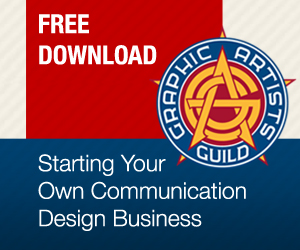
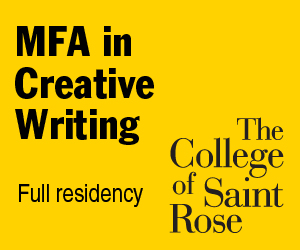
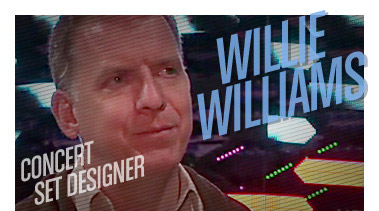
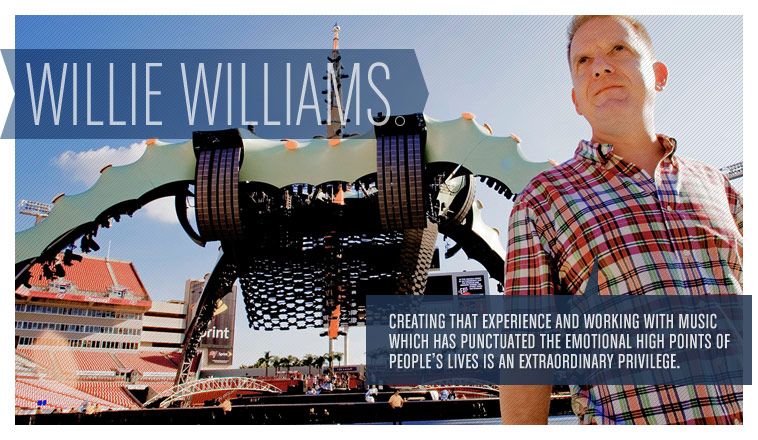
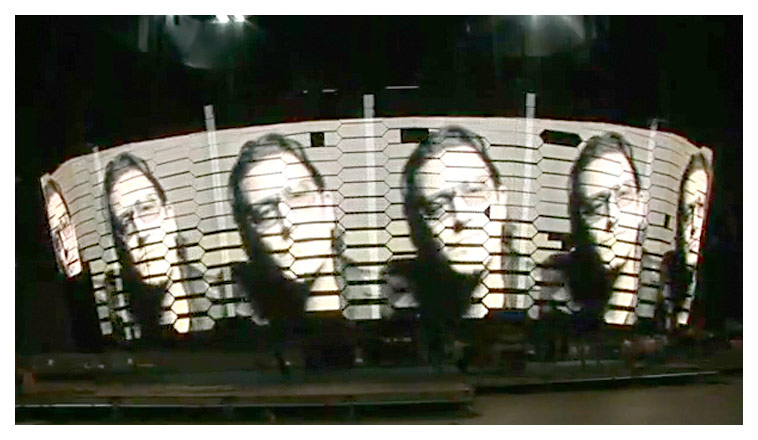
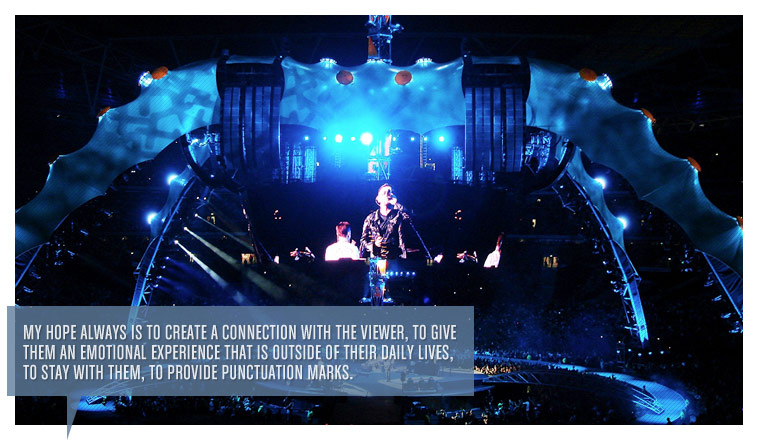
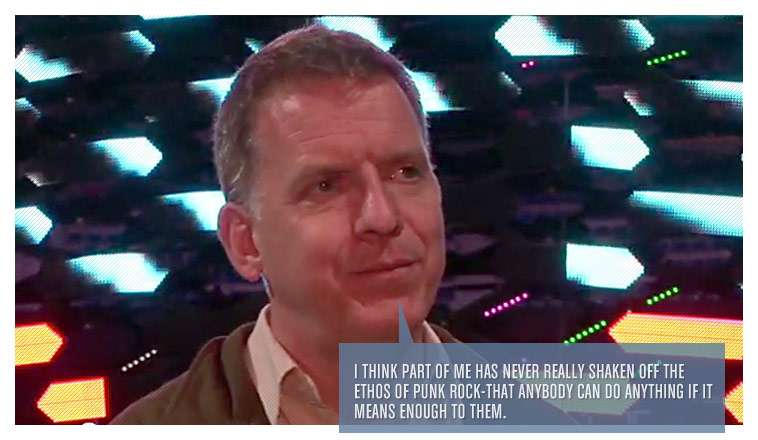
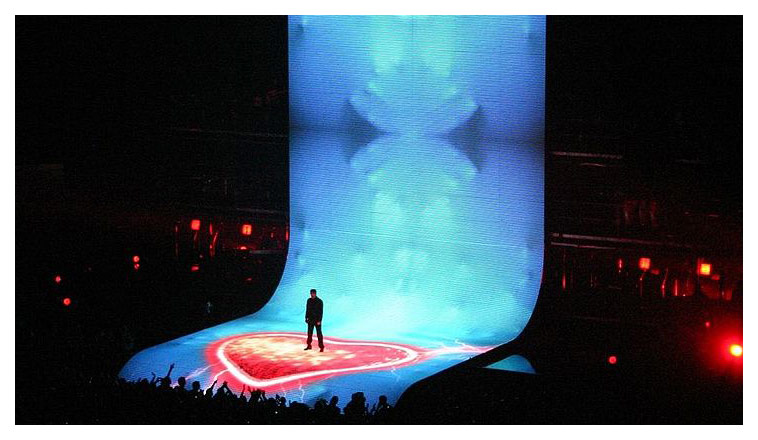

Reader Comments